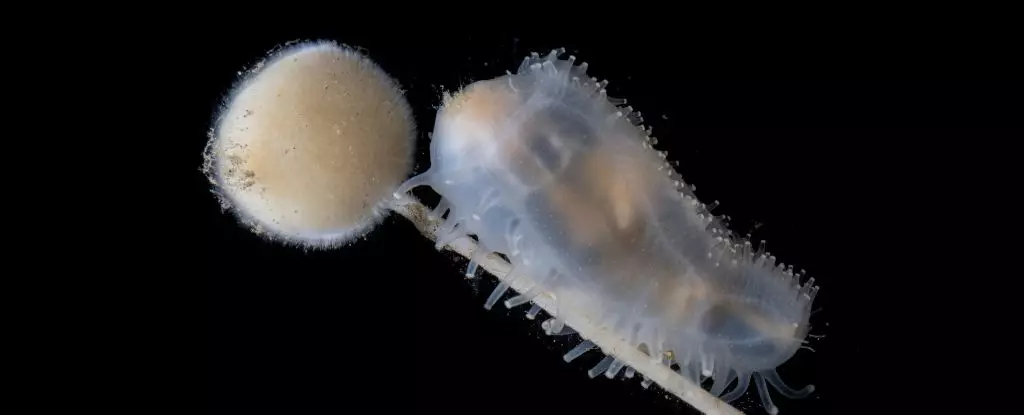Recent explorations into the deep ocean have revealed astonishing landscapes and ecosystems that defy our understanding of marine life. A notable example is the recent 35-day expedition carried out by the Schmidt Ocean Institute aboard the research vessel Falkor (too) to the South Sandwich Islands in the South Atlantic. This expedition serves as a vivid reminder of the importance of marine research and underscores the urgency for conservation as climate change and deep-sea mining continue to threaten these fragile environments.
Set against a backdrop of swirling storms, daunting seismic activities, and ice-laden waters, the scientific team ventured into a largely uncharted territory. What they discovered transcends mere curiosity; it is a clarion call for proactive engagement in oceanic preservation. Amidst the diversity of life that flourished in these hydrothermal vent ecosystems, the images and data collected paint a vivid picture of resilience and biodiversity.
Hydrothermal Vents: Nature’s Hidden Gardens
The hydrothermal vents surveyed during this expedition are otherworldly. Unlike any seen before in this region, they teem with life and color, showcasing the astonishing adaptability of organisms in extreme conditions. One of the standout features of this underwater landscape is the vibrant vermilion coral garden located near Humpback Seamount at depths of around 700 meters. Here, colossal chimney structures rise from the ocean floor, adorned with barnacles, sea snails, and an impressive assemblage of shrimp darting about. This spectacle is not just beautiful; it signifies a previously unknown ecosystem that possesses its own intricate food web.
Hydrographer Jenny Gales called the discovery of these vents “magical”; this joy is well-founded. The diversity found here represents a snapshot of Earth’s evolutionary history and showcases the myriad forms of life that can exist in the shadows of the deep—far from sunlight and conventional ecosystems. The sheer height of the vent chimneys—reaching up to 4 meters tall—evokes a sense of wonder. What other secrets lie hidden beneath the waves waiting to be unraveled?
Encounters with the Unfamiliar
Among the enthralling finds, wildlife enthusiasts are particularly captivated by a species that has eluded researchers for years: the elusive Akarotaxis aff. gouldae, a type of dragonfish captured on camera for the very first time. This intriguing discovery embodies the spirit of exploration, highlighting how much remains to be learned from our oceans. Additionally, marine biologist Michelle Taylor poignantly encapsulated the essence of this mission when she remarked on the expedition’s impact on our understanding of marine life.
Not all encounters were met with delight; some individuals witnessed parasitic copepods nestled in the gills of a grenadier fish. These unsettling visuals serve as a reminder of the complex relationships that exist in the ocean and highlight the challenges that marine life faces in a changing world. Moreover, the unexpected sight of snailfish eggs on black corals—an instance previously unknown to researchers—further emphasizes the wealth of information yet to be documented.
The Impending Threats to Marine Life
The South Sandwich Islands expedition is not just an adventure into the unknown; it is steeped in the urgent reality of environmental threats. As marine biologists work diligently to unveil the secrets of these deep-sea ecosystems, the clock is ticking. The phenomenon of climate change looms large, with ocean temperatures rising and habitats being altered. The extraction of resources through deep-sea mining poses further dire risks, threatening species that may still hold the keys to ecological balance.
This expedition underlines the critical necessity for sustained scientific research and conservation efforts. The data provides invaluable insights, but it must be acted upon swiftly. The incredible biodiversity discovered in these waters serves not just as a subject of study, but as a poignant reminder of what is at stake.
A Call to Action
In a world where technological advancements and exploration often lead to exploitation, the ethos behind the Ocean Census project embodies hope for future generations. This mission, with its spirit of discovery, is demanding our attention to the right prioritize marine preservation. As scientists delve deeper into the ocean’s depths, they depict a world that is not just vast but intricately interconnected.
The more we understand these enigmatic ecosystems, the more we become acutely aware of our responsibilities toward their protection. As our knowledge expands, it becomes increasingly vital to advocate for policies that reflect the importance of these marine environments. The expedition may have concluded, but its revelations are only the beginning of a larger narrative that calls us to action. The future of our oceans depends on the guardianship we choose to offer today.


Leave a Reply